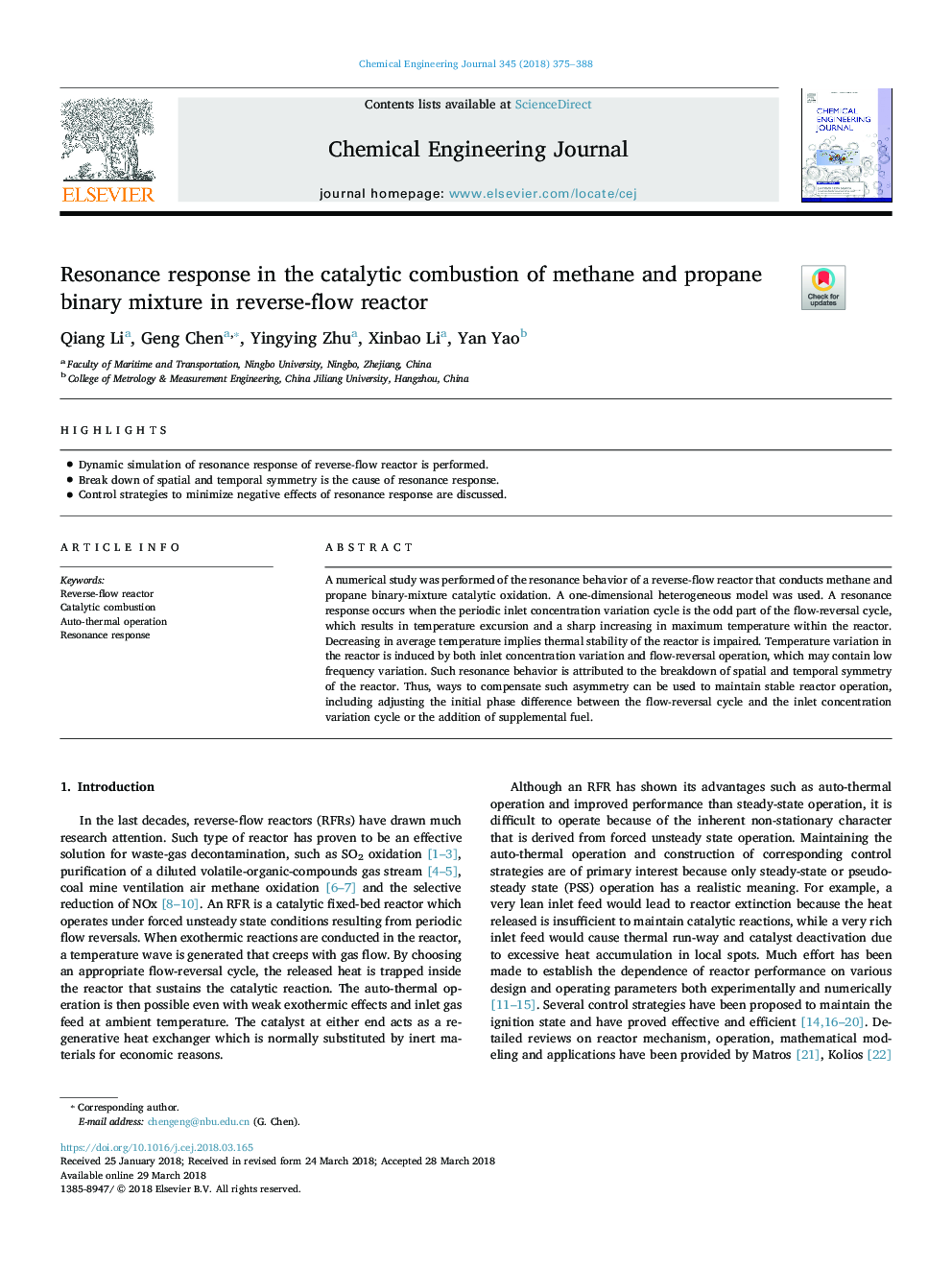| کد مقاله | کد نشریه | سال انتشار | مقاله انگلیسی | نسخه تمام متن |
|---|---|---|---|---|
| 6579488 | 1422933 | 2018 | 14 صفحه PDF | دانلود رایگان |
عنوان انگلیسی مقاله ISI
Resonance response in the catalytic combustion of methane and propane binary mixture in reverse-flow reactor
ترجمه فارسی عنوان
پاسخ رزونانس در احتراق کاتالیزور مخلوط متان و دوتایی پروپان در راکتور معکوس جریان
دانلود مقاله + سفارش ترجمه
دانلود مقاله ISI انگلیسی
رایگان برای ایرانیان
کلمات کلیدی
رآکتور جریان معکوس، احتراق کاتالیستی، عملیات خودکار حرارتی، پاسخ رزونانس،
ترجمه چکیده
یک مطالعه عددی از رفتار رزونانس یک رآکتور جریان برگشت پذیر که باعث اکسیداسیون کاتالیزوری مخلوط متان و پروپان می شود. یک مدل ناهمگن یک بعدی استفاده شد. پاسخ رزونانس زمانی اتفاق می افتد که دوره ی تغییرات غلظت غلظت ورودی به صورت عددی از چرخه معکوس جریان است که منجر به خروج دما و افزایش شدید در حداکثر دما درون راکتور می شود. کاهش دمای متوسط به این معنی است که پایداری حرارتی راکتور کاهش می یابد. تغییرات دما در راکتور بوسیله هر دو تغییر غلظت ورودی و عملیات معکوس جریان، که ممکن است شامل تغییرات فرکانس پایین، ایجاد شود. چنین رفتار رزونانس به فروپاشی تقارن فضایی و زمانی راکتور مربوط می شود. بنابراین، راه هایی برای جبران چنین عدم تقارن می تواند برای حفظ عملکرد راکتور پایدار، از جمله تنظیم فاصله فاز اولیه بین چرخه معکوس جریان و چرخه تغییر ورودی غلظت یا اضافه کردن سوخت اضافی مورد استفاده قرار گیرد.
موضوعات مرتبط
مهندسی و علوم پایه
مهندسی شیمی
مهندسی شیمی (عمومی)
چکیده انگلیسی
A numerical study was performed of the resonance behavior of a reverse-flow reactor that conducts methane and propane binary-mixture catalytic oxidation. A one-dimensional heterogeneous model was used. A resonance response occurs when the periodic inlet concentration variation cycle is the odd part of the flow-reversal cycle, which results in temperature excursion and a sharp increasing in maximum temperature within the reactor. Decreasing in average temperature implies thermal stability of the reactor is impaired. Temperature variation in the reactor is induced by both inlet concentration variation and flow-reversal operation, which may contain low frequency variation. Such resonance behavior is attributed to the breakdown of spatial and temporal symmetry of the reactor. Thus, ways to compensate such asymmetry can be used to maintain stable reactor operation, including adjusting the initial phase difference between the flow-reversal cycle and the inlet concentration variation cycle or the addition of supplemental fuel.
ناشر
Database: Elsevier - ScienceDirect (ساینس دایرکت)
Journal: Chemical Engineering Journal - Volume 345, 1 August 2018, Pages 375-388
Journal: Chemical Engineering Journal - Volume 345, 1 August 2018, Pages 375-388
نویسندگان
Qiang Li, Geng Chen, Yingying Zhu, Xinbao Li, Yan Yao,
